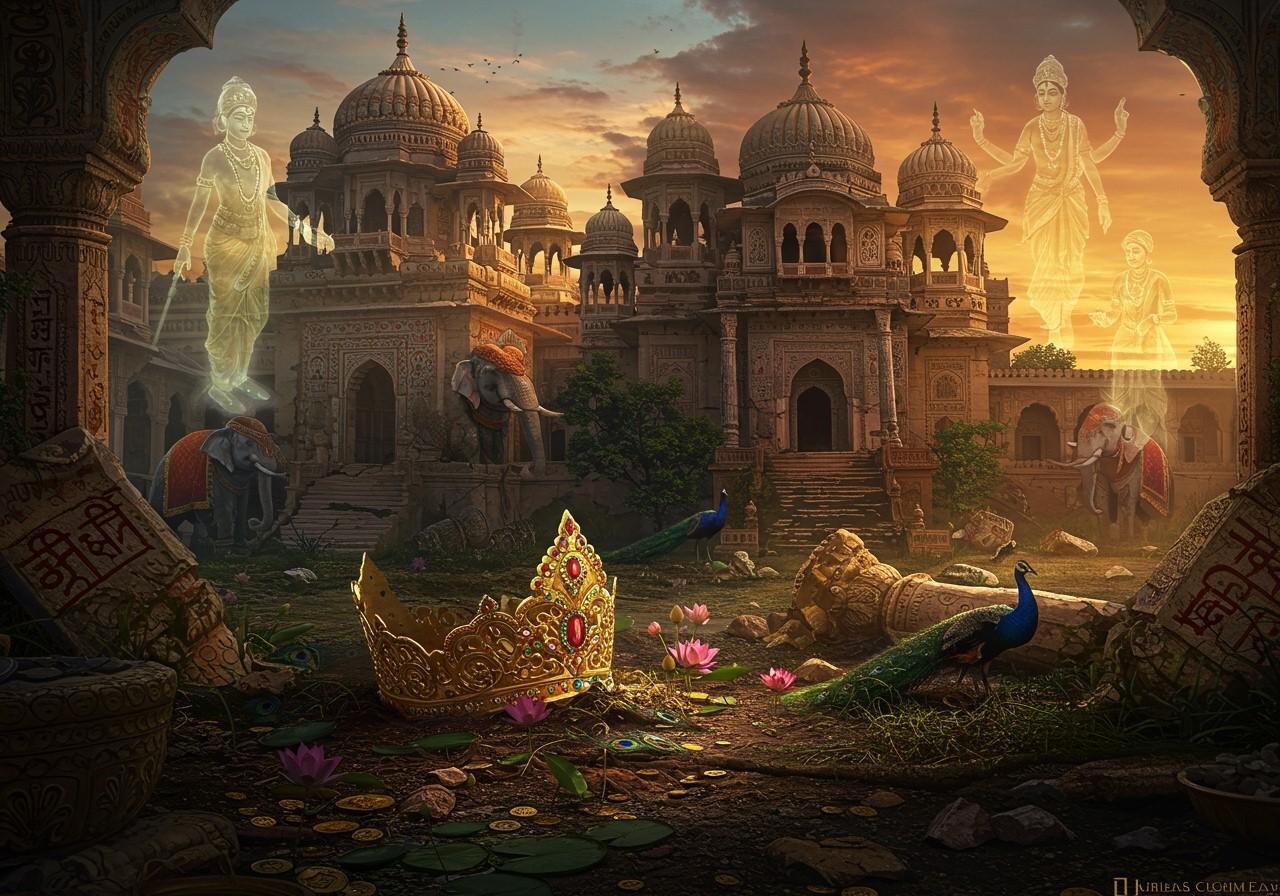
The Vardhana dynasty, reaching its zenith under the reign of Harshavardhana (606-647 AD), significantly shaped the political and cultural landscape of 7th-century northern India. Harshavardhana, a prominent ruler of the Pushyabhuti dynasty, consolidated power after the decline of the Gupta Empire, bringing together local chieftains and provincial administrators. His reign was marked by remarkable achievements in governance, scholarship, and patronage of the arts. However, the empire faced fragmentation after his death in 647 AD, leading to the rise of regional powers. This article delves into the dynasty’s rise, its eventual decline, the succeeding rulers, and its enduring legacy.
The Reign of Harshavardhana (606-647 AD)
Harshavardhana’s ascension marked a golden era for the Vardhana Empire. He expanded the empire’s territories through strategic military campaigns and alliances, notably securing a victory against the Huns. Beyond military prowess, Harshavardhana distinguished himself as a scholar and patron of the arts, promoting intellectual and cultural growth. His support for Buddhism led to the flourishing of Nalanda University as a renowned center of learning, attracting scholars from across Asia. His effective administrative structure further strengthened the empire, positively influencing both the economy and culture of northern India.
Factors Contributing to the Decline
The demise of the Vardhana Empire following Harshavardhana’s death in 647 AD can be attributed to a confluence of factors. The absence of a designated heir created a power vacuum, leading to internal conflicts and civil war. This weakening of central authority provided an opportunity for regional powers to assert their independence. Economic decline, exacerbated by overexpansion and administrative inefficiencies, further destabilized the empire. External pressures from invading neighboring kingdoms compounded these internal challenges. Moreover, religious and social shifts, possibly exacerbated by natural disasters or famines, contributed to the empire’s fragmentation.
Successors to the Vardhana Dynasty
The post-Vardhana period witnessed the emergence of several regional powers. While the Pushyabhuti dynasty briefly held sway, other dynasties rose to prominence: the Pratihara dynasty in the west, the Pala dynasty in the east, the Rashtrakuta dynasty in the Deccan region, and the Chalukya dynasty in southern India. This era signified a shift from centralized imperial rule to a more fragmented political landscape, characterized by diverse administrative and governance models.
Enduring Cultural and Political Legacy
Despite its relatively short lifespan, the Vardhana dynasty left an indelible mark on Indian history. Harshavardhana’s patronage of the arts and religion continued to shape Indian culture, while Nalanda University remained a beacon of learning. The dynasty’s contributions to literature, exemplified by the works of Banabhatta, enriched the literary tradition. Their architectural and artistic achievements, including temples and sculptures, stand as testaments to their cultural influence. The Vardhana administrative practices served as models for future governance structures, influencing regional identities and cultural practices. Historical narratives and legends further cemented the Vardhana dynasty’s place in Indian memory.
How Poojn.in Helps Preserve Ancient Indian Heritage
At Poojn.in, we recognize the profound connection between India’s rich history and its spiritual traditions. As you explore the legacy of the Vardhana Dynasty and its successors, you might be inspired to connect with the rituals and practices of that era. Poojn.in offers a wide selection of products to support your spiritual journey:
- Complete Puja Samagri Kits: Start your puja practice with ease using our comprehensive kits containing authentic ingredients. We source high-quality materials to ensure a genuine and fulfilling experience.
- Pure Copper and Brass Ritual Items: Enhance your puja space with beautifully crafted items made from pure copper and brass. These traditional materials add an element of authenticity and reverence to your rituals.
- Traditional Dhoop and Agarbatti: Create a sacred atmosphere with our selection of traditional dhoop and agarbatti from trusted brands. Choose from a variety of fragrances to elevate your spiritual practice.
- Specially Curated Yantra and Religious Items: Explore our unique collection of yantras and other religious items, carefully selected for their spiritual significance. Discover powerful tools for meditation, energy work, and personal growth.
Visit Poojn.in to explore our complete collection and discover how we can help you preserve and connect with India’s rich cultural heritage. We offer pan-India delivery and secure packaging to protect your sacred items.
Nail Polish (For Pooja Purpose)
Pure Camphor
Incense Sticks
Pooja Asan
Conclusion
The Vardhana dynasty, particularly under Harshavardhana’s reign (606-647 AD), played a pivotal role in shaping northern India’s trajectory. Harshavardhana’s rule fostered cultural, economic, and intellectual flourishing. Despite its eventual decline after his death in 647 AD, the dynasty’s influence on Indian culture, administration, and education remains profound. The rise of regional powers following the empire’s fragmentation significantly altered the political landscape, shaping the course of Indian history. The legacy of Harshavardhana and the Vardhana dynasty continues to resonate, reflecting their lasting impact on Indian tradition and culture.
Hinduism’s Global Reach
Hinduism: A Complete History and Origin


